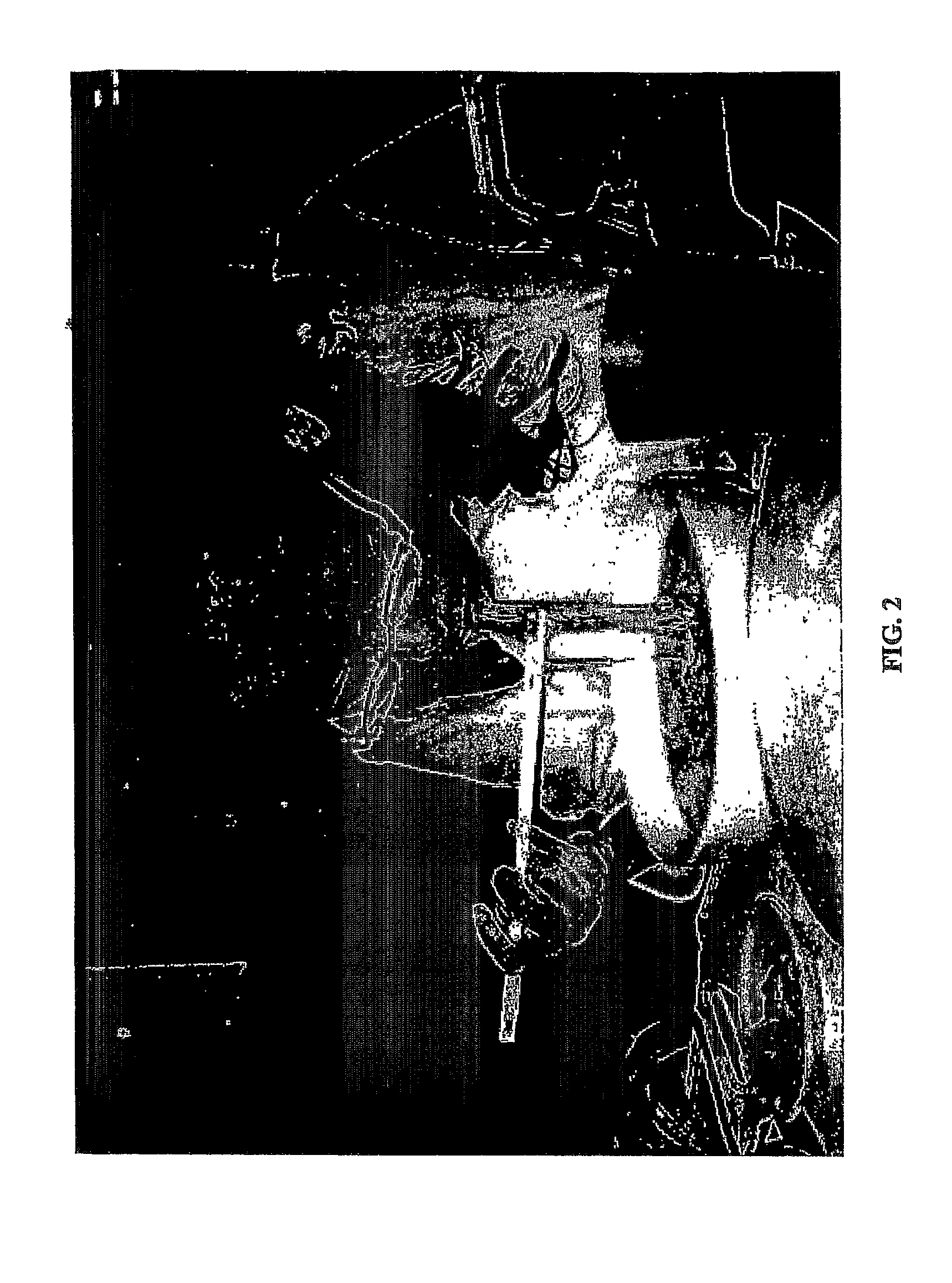Method for treatment of movement disorders
a movement disorder and treatment method technology, applied in the field of movement disorders, can solve the problems of patients with essential tremors, patients with significant quality of life problems, and patients with difficulty in performing essential tremors' movements, and achieve the effect of reducing the symptoms of movement disorders
- Summary
- Abstract
- Description
- Claims
- Application Information
AI Technical Summary
Benefits of technology
Problems solved by technology
Method used
Image
Examples
example 1
[0071]A single patient clinical trial of Xyrem® for severe posthypoxic myoclonus was performed. The patient was a 37-year-old woman who suffered an anesthesia accident. After remaining in a coma, she awakened and gradually recovered, however she was completely disabled by severe myoclonic jerks that affected her voice, head, proximal arms, legs and trunk. By clinical examination she had both positive myoclonus (active jerks) and negative myoclonus (postural lapses). Her myoclonus had been treated with phenobarbital, zonisamide, clonazepam and levetiracetam, without significant improvement. Prior to the trial she was treated with clonazepam and levetiracetam. She is allergic to penicillin, has no other known drug allergies, and is otherwise in good general health.
[0072]Case Report
[0073]An open-label, dose-finding, blinded rating trial of GHB in a single patient with severe, debilitating alcohol-responsive posthypoxic myoclonus refractory to treatment with standard anti-myoclonic agen...
example 2
[0089]In this prophetic example, a short double-blind, placebo-controlled protocol will be performed with approximately 20 patients, followed by an open-label extension. The protocol will call for a titration up to 6.125 gm per day in the double-blind phase, with the option of titrating up to 9 gm per day in the open-label phase.
[0090]Experimental Design
[0091]The study is a double-blind, randomized, placebo-controlled, parallel-group, dose ranging trial of GHB for dystonia. The study population includes patients with clinically significant myoclonus-dystonia.
[0092]The primary objectives include: 1) To assess the safety and tolerability of GHB in dystonia patients and 2) To assess the efficacy of GHB in treating dystonia. The secondary objectives are: 1) To assess the effect of dosing of GHB on dystonia.
[0093]The duration of the double-blind portion of the study is 8 weeks. The duration of the fixed-dose portion of the study is 8 weeks. The duration of the dose-ranging portion of the...
example 3
Patients and Methods
[0101]Five patients were enrolled in a trial from the Movement Disorders Division of Columbia University Medical Center during the fall of 2004. All patients were afflicted with hyperkinetic movement disorders that responded to ethanol (defined as a noticeable change to the patient), and all were refractory to treatment with conventional medications or could not tolerate them. The Medical Center's Institutional Review Board approved the trial, and written and verbal informed consent were obtained from all patients prior to enrollment. Salient clinical features appear below and are summarized in Table 1.
TABLE 1Clinical features of patients with ethanol-responsive movement disordersPt #M / FAgeDxt (yrs)CURRENT RXPast Rx1F37PHM6levetiracetam 2,500 mgvalproic acidclonazepam 6 mgtizanidinephenobarbital 60 mgprimidonealprazolam 0.5 mggabapentinrabeprazole 20 mgparoxetinebaclofen 20 mgpiracetam2M25MD7levetiracetam 500 mgtrihexiphenidyldiazepam 15 mgclonazepamprimidone3M20...
PUM
| Property | Measurement | Unit |
|---|---|---|
| time | aaaaa | aaaaa |
| time | aaaaa | aaaaa |
| time | aaaaa | aaaaa |
Abstract
Description
Claims
Application Information
 Login to View More
Login to View More - R&D
- Intellectual Property
- Life Sciences
- Materials
- Tech Scout
- Unparalleled Data Quality
- Higher Quality Content
- 60% Fewer Hallucinations
Browse by: Latest US Patents, China's latest patents, Technical Efficacy Thesaurus, Application Domain, Technology Topic, Popular Technical Reports.
© 2025 PatSnap. All rights reserved.Legal|Privacy policy|Modern Slavery Act Transparency Statement|Sitemap|About US| Contact US: help@patsnap.com



